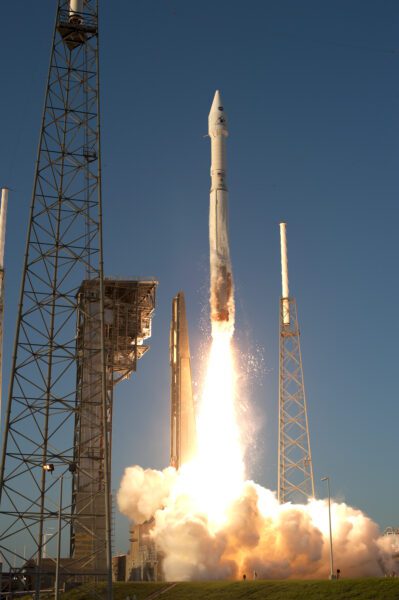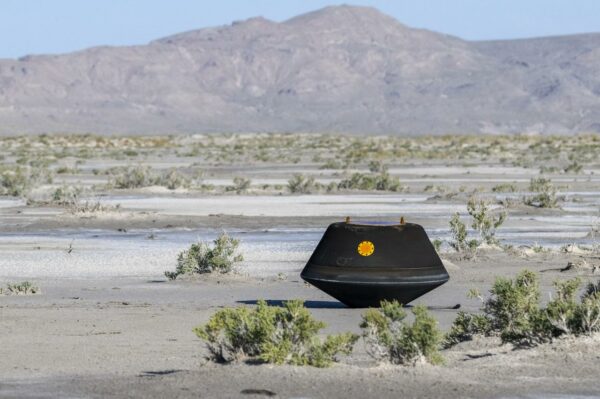Let’s talk about REx baby: NASA’s first asteroid sample returns to Earth

Words by Mushfique Syed
On September 20 2023, NASA’s OSIRIS-REx (Origins, Spectral Interpretation, Resource Identification and Security – Regolith Explorer) team successfully returned their first asteroid sample to Earth.
The craft was launched by the team on September 8 2016 towards the near-Earth asteroid Bennu, with the aim of collecting a sample and returning it to Earth for further study.

Why Bennu?
Bennu was selected as the asteroid to sample for a number of reasons. It is close to Earth, within 190 million km, with a well-known orbit that is similar to Earth’s own. Bennu is also relatively large, with a diameter of around 500 metres, which would allow for a safe landing.
In addition, the asteroid has a primarily carbon-based composition. These kind of asteroids are thought to have brought water and organic material to Earth and triggered the process allowing carbon-based life to evolve.
The probe reached Bennu’s orbit on December 31 2018. This orbit set two records in astronomy: the smallest body to be orbited by a spacecraft, and the closest ever orbit to a small body.

To Bennu and back
OSIRIS-REx then made a brief touch down on the surface of the asteroid on October 20 2020; the probe conducted a series of readings and measurements, and collected a sample weighing 250 grams. It finally began the long journey back to Earth on May 10 2021.
The importance of this sample for scientific study of our solar system cannot be understated. This sample will provide scientists with insights on how the early solar system formed, and how life may have emerged.
“The OSIRIS-Rex sample is the biggest carbon-rich sample ever delivered to Earth and will help scientists investigate the origins of life on our own planet for generations to come,” – NASA Administrator, Bill Nelson.
This is because the bodies in the asteroid belt between Mars and Jupiter are some of the only remaining large bodies from the heavy bombardment period of the early solar system. During this time, asteroids, remnants of the formation of the inner solar system, frequently collided with each other and other celestial bodies. The interplanetary fragments created by these collisions transported organic materials, such as carbon and water, across the inner solar system, including to Earth. Studying Bennu will tell us about similar asteroids that may have struck Earth early on in its life and the conditions that may have been brought about as a result.
After a successful recovery of the sample from its capsule on Earth, the sample was treated by NASA before preliminary tests were conducted and samples were distributed to scientists across the globe.

Studying the past and predicting the future
This mission may also help us understand asteroids that could impact Earth in the future. Bennu has a relatively close orbit to Earth which makes it a potentially hazardous object, however NASA now estimates the risk is quite low.
The thermal radiation data collected during the landing on Bennu can be used to predict the asteroids future movement and how it may affect other bodies in the asteroid belt. This early warning provided by the OSIRIX-REx mission could help scientists take preventative measures prior to an impact.
On October 11, NASA released new information about their early tests of the sample, confirming the presence of carbon compounds. “As we peer into the ancient secrets preserved within the dust and rocks of the asteroid Bennu, we are unlocking a time capsule that offers us profound insight into the origins of our solar system,” Said Dante Lauretta, OSIRIS-Rex principle investigator, University of Arizona.
What’s next?
The OSIRIS probe has remained in space after sending the sample capsule back to Earth and its next target has already been selected: the asteroid Apophis, where it is expected to arrive in 2029. This project will take on a new name, OSIRIS-APEX, and the new target will have similar aims to the Bennu mission: to provide us with more data on asteroids and how they made up the early solar system, as well as insights into their potential impact risk.
Words by Mushfique Syed







